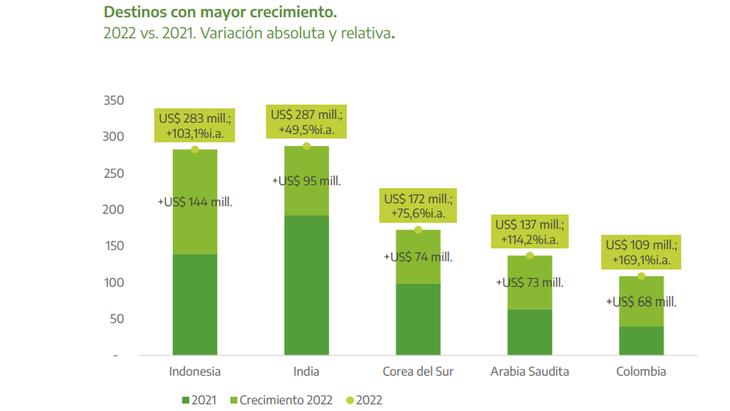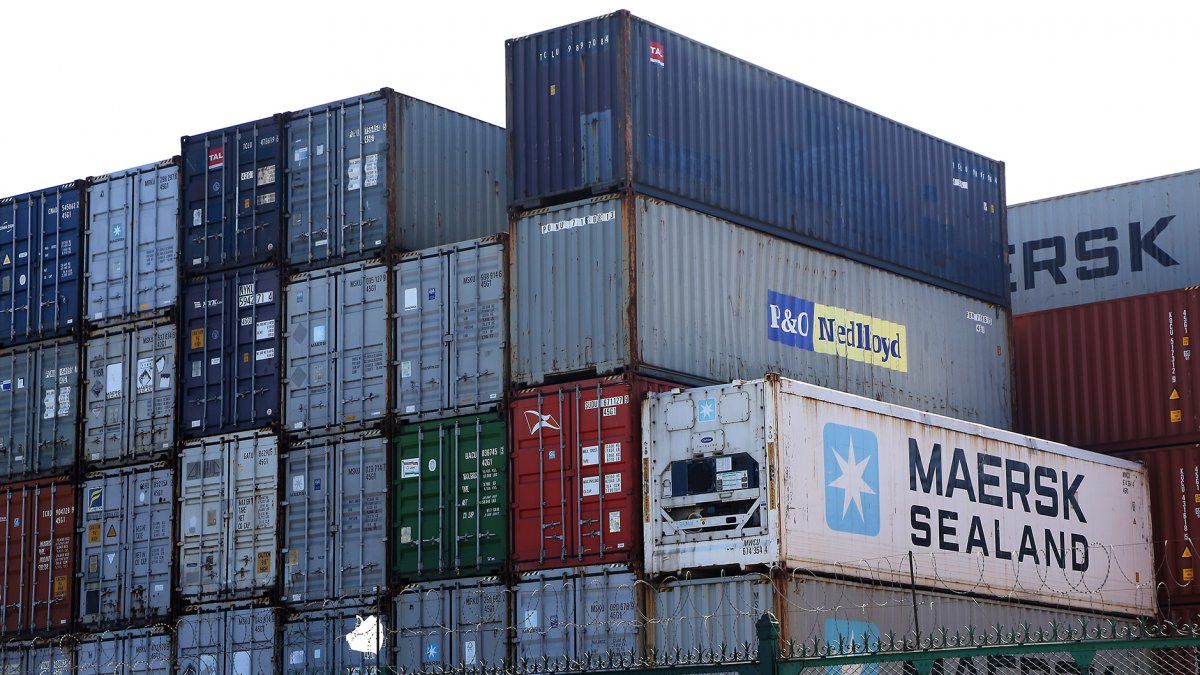During the past year, 68 cooperatives reported exports, three more than those registered in 2021. The total traded volume of US$3,889 million was divided among them, the highest value in the last six years.
For Roig, The key to the development of export cooperatives was in the facilitation by the State of administrative procedures, but he also remarked that during this time there were actors in the sector that have become more visible and efficient. “That allows them to show their strengths and capabilities. When the State accompanies and facilitates things, it generates incentives for this organizational form to be seen as privileged”, he affirmed.
cooperative exports.png
Source: Export Monitor of Cooperativism 2022
Main export destinations
The report indicates that 65% of the export cooperatives traded products for values that ranged between US$50,000 and US$5 million. However, 93% of the total exported was linked to billings above US$50 million.
It also highlights that exports had 121 different destinations and each cooperative exported on average to 7.5 countries. The epicenter was located in Asia, with China in the lead (US$ 579 million), followed by Vietnam ($322M), India ($287M), Indonesia ($283M) and Malaysia ($182M).
In addition to the central importance of the Asian continent in the volume exported and in the amount of foreign currency that entered as a result of sales to these destinations, Roig also highlighted the role of the countries of the Middle East. In the case of Saudi Arabia, trade grew 114.2% year-on-year and closed the year with sales of US$137 million.
In this regard, the head of INAES considered that “the trust that is generated with importing countries makes them see cooperatives as a reliable sector with which they can agree and that guarantees volume and quality.” In this way, the link created makes importers buy again from the same supplier, knowing that it will comply in a timely manner.
export destinations cooperatives.png

Source: Export Monitor of Cooperativism 2022
A large part of the commercial circuits developed by cooperatives in recent times have to do with the opportunities for meetings that take place in areas promoted by the public sector. In this sense, Roig highlighted the importance of international fairs coordinated by the Ministry of Foreign Affairs. The trade missions of the organization enable spaces for dialogue and negotiation between exporters and importers that allow opening new markets.
Beyond the work of the Foreign Ministry and INAES itself, Roig also highlighted “the key role played by the president of the International Cooperative Alliance, Ariel Guarco.” The Argentine cooperative leader leads the main organization of the sector at a global level that brings together .
“Clearly this paid off in favoring the emergence of new markets and the strengthening of old export markets for the sector,” added Roig.
exported products
The main products exported were linked to the agro-industrial economy. The top ten explained 91% of the total: corn grain with sales of US$1,046 million, followed by oilseed by-products of soy for US$714 million, oil of the same origin for US$539 million, wheat for US$376 million and soy for US$231 million.
The cooperatives also traded sorghum abroad grain, barley, sunflower oil, tobacco unprocessed in sheets and peanut, but they also invoiced sales of industrial products such as yachts, boats rowing, canoes and boats of different types. And even bovine semen.
The sector represents more than 10% of GDP in global terms, Roig explained, but he considered that its importance exceeds the volume produced or the foreign currency that enters thanks to exports, since “it represents an organizational form whose anchoring results in local development.”
Unlike what happens with transnational companies that do business in the country, cooperatives and mutuals have a strong link with the local economy. “Each peso or dollar produced circulates in the place of origin,” said Roig, which transforms it into a “very efficient model for creating surplus that in turn is not concentrated territorially or personally and therefore allows a much more virtuous development from the country”.
The associative sector has managed to double exports in recent times, mainly thanks to agribusiness. However, it also has a leading role at the local level in traditional services such as energy. And little by little, cooperatives linked to the knowledge economy are growing: they currently have more than 500 workers in some thirty technology companies.
“The sector of the knowledge economy finds in cooperativism a key organizational form”, pointed out Roig and developed: “The way of organizing work in the ICT sector (NdR: Information and Communication Technologies) implies a lot of collaborative work and this is expressed very well in cooperatives, which in addition to being the most democratic model, It is what allows us to organize the production of goods and services in a much more horizontal way”.
Beyond the export leap, the sector has a series of specific challenges ahead, according to Roig. On the one hand, gain greater visibility. On the other, reverse certain prejudices that still circulate in society.
“In contemporary capitalism, the figure of cooperatives and mutuals, which comes from collective traditions, has many enemies. That led the sector to take a position of discretion. However, in recent times it has decided to change its strategy, leaving aside that certain invisibility ”explained the head of INAES and added: “The challenge is to gain greater visibility and reverse the prejudices that still exist.”
In addition, he considered that it is necessary to strengthen its centrality in the country’s economy in order to solve the main problems that today affect the daily life of Argentines: access to credit, the production and distribution of food, the organization of work, the organization of the health system, among others.
“To all the great problems that our country has, the cooperative and mutual system provides solutions. But, in addition, it allows a framework of collective life and freedom, which responds to a desire to live in society ”, he concluded.
Source: Ambito




